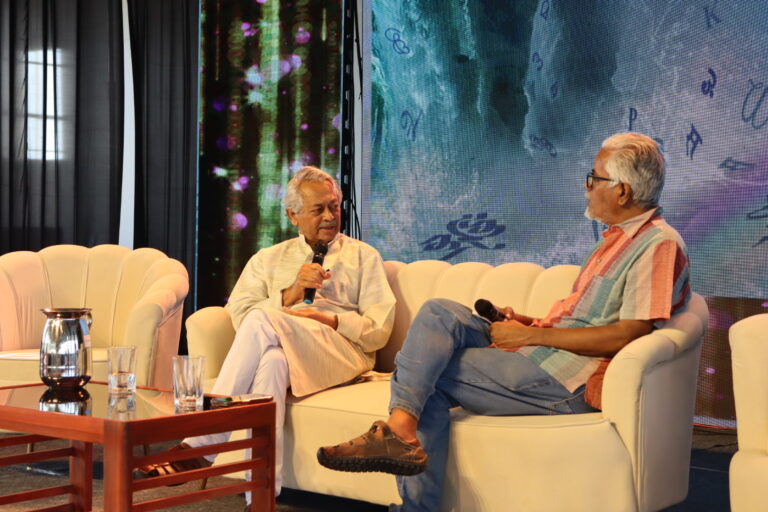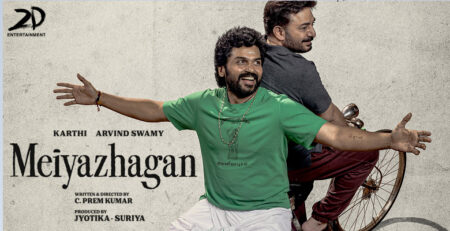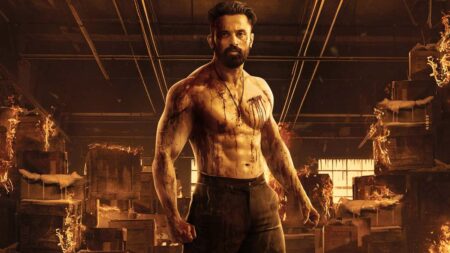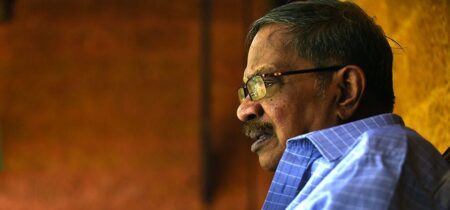Acclaimed Kannada filmmaker Girish Kasaravalli posits that cinema transcends mere plot or story; it is a discourse. Going beyond narrative conventions, the medium delves into socio-political realities, utilising them as a means to convey a story.
While exploring the fundamental and analytical aspects of cinema, Girish Kasaravalli introduces new dimensions for comprehending the multifaceted facets of filmmaking. Engaging in a captivating conversation with Film Critic Dr. C S Venkiteswaran on ‘Cinema: History, Culture, Technology, Conversation,’ during the second edition of the Peruvanam International Village Festival held at Cherpu, Thrissur, Kasaravalli shares his perspectives on contemporary cinema and the intersection of film culture and technology, providing a comprehensive exploration of the cinematic landscape. Facilitated by the Sarvamangala Trust, the discussion enriches the understanding of cinema as a nuanced form of expression.
Identifying himself as a critic of his own works, the director’s discernment is evident in his portrayal of raw stories from villages and their people, displaying a commitment to inclusivity. His films showcase various facets and dimensions of communities, relationships, individual conflicts, and the intersection of individuals with their environment, as well as issues related to caste, among others. Kasaravalli’s mastery in blending the post-independence era lifestyle with universal themes, ethics, and conflicts, influenced by literary styles, stands out as a defining feature in the Kannada Film Industry.
Reflecting on his evolution, Kasaravalli recalls being initially drawn to tear-jerking plots in his early days. However, gaining a profound understanding of the essence of filmmaking transformed his perspective. Stressing the importance of deconstructing a scene while watching, he contends that this approach elevates the viewer to a space focused on capturing the essence of cinema.
Kasaravalli’s passion and eagerness to translate any idea into a film are evident in his words. He articulates, “For me, things I read or see percolate within me, creating an urge to see them on screen and compelling me to create a film.” Addressing the adaptation of stories from novels to movies, he asserts that the process involves a seamless transition from words to images. He advises against seeking stories with preconceived notions, emphasizing three key considerations while adapting a story: its space-time relation to the contemporary world, the emotional impact it can generate, and the enduring relevance of the film even after fifteen years.
Notion of Indian Cinema
He staunchly opposes the notion of Indian Cinema. According to him, it must be referred to as ‘Indian Cinemas’—in the plural form—since it encompasses and addresses various heterogeneous categories of people through different languages. The social, political, cultural, and economic aspects of a region also reflect the diversification in cinema culture. He points out that the demerit of Indian Cinema lies in the absence of the technique of scene deconstruction on the academic side in film institutes, especially when compared to Hollywood movies. While he does not consider Hollywood Cinema a great art, he insists that these movies, through scene deconstruction, can identify exact points that will either work or fail when employed, demonstrating a preparedness that is lacking in the Indian Cinema.
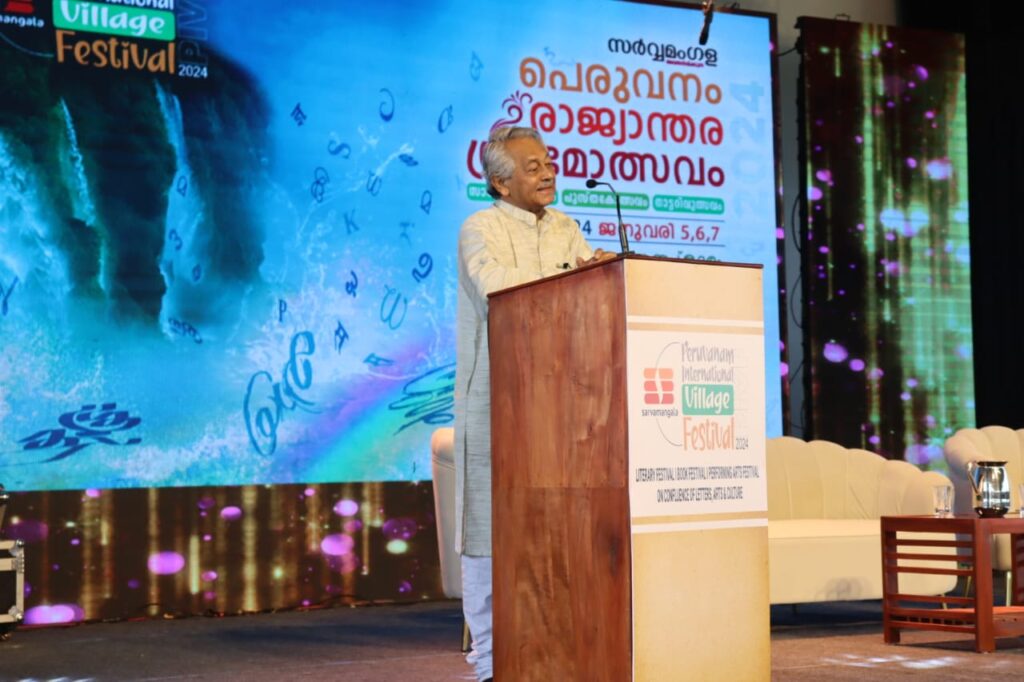
Kasaravalli, who initially enrolled in a pharmacy course in Manipal and later planned to pursue M.Pharm, underwent a three-month training program as part of B. Pharm at IDPL Hyderabad. This opportunity allowed him to watch more films than in his village, exposing him to the works of Satyajit Ray and other prominent directors. In his own words, “It was a period when I was exposed to good and real cinemas.” Following the training, a one-year gap before joining Manipal College for M. Pharm changed his destiny. A newspaper advertisement announcing the application invitation to the Film and Television Institute of India (FTII) at Pune caught his attention. Without any prior technical knowledge, he applied, took the test, went through the interview procedures, and eventually enrolled. According to him, “The film institute shaped me. Until then, my exposure was limited to Kannada literature, but FTII opened windows to broad reading and exposure to both classic and contemporary films. Professors there deconstructed every movie scene by scene, guiding us to find techniques and points where the muse occurs for the audience. The entire dimension of my art, literature, and cinema expanded and clarified during my FTII days.”
Asian Cinema versus European Cinema
In his conversation, the filmmaker highlighted the disparities between Asian Cinema and European Cinema. He explains, “Asian Cinemas strive to convey ideas through emotions, evoking feelings toward the characters among the audience. Camera movements emphasize emotions, along with frame composition, mise-en-scène, etc. Conflict within the frame is also highlighted, and music plays an indispensable role in such movies. On the other hand, European movies prioritize ideation first, with emotion preceding construction. Music influence is less compared to Asian Cinema of the same genre. Cathartic movements are somewhat absent in European Movies, with fewer camera movements, as they aim to present all content in an encompassed form.”
Through his filmmaking journey, he found profound inspiration in the works of Kota Shivarama Karanth and Kuvempu. The art form of Coastal Karnataka, Yakshagana, and the Modernist Literary Movement in Karnataka known as ‘Navya,’ involving figures like U.R. Ananthamurthy, Patre Lankesh, Purnachandra Tejaswi, etc., also left a lasting impact on him. Additionally, filmmakers such as Satyajit Ray and others from the world cinema served as sources of inspiration.
Regarding his own works, Girish discussed his filmmaking career, highlighting his debut film, “Ghatashraddha,” released in 1977, which drew inspiration from U R Ananthamurthi’s novella. The story, with its profound emotional impact, prompted him to envision it as a cinematic creation. Rich in religious metaphors, emotional integrity, a social dimension, and a touch of drama, the film became a significant early milestone. He then shared insights into his bilingual film, “Ek Ghar,” produced in Kannada and Hindi, starring Naseeruddin Shah and Deepthi Naval.

